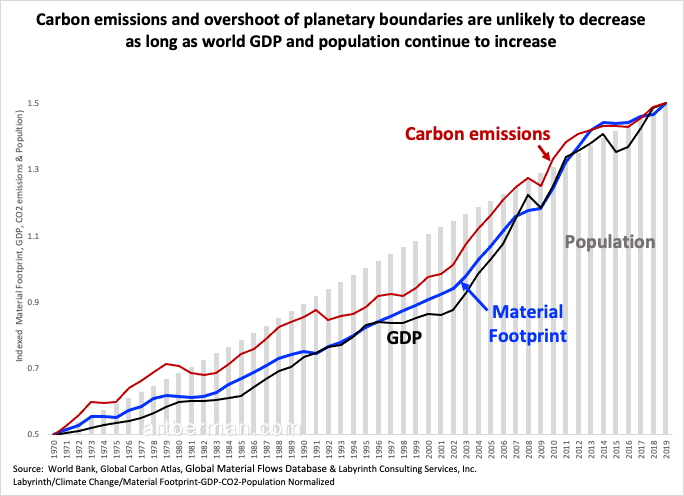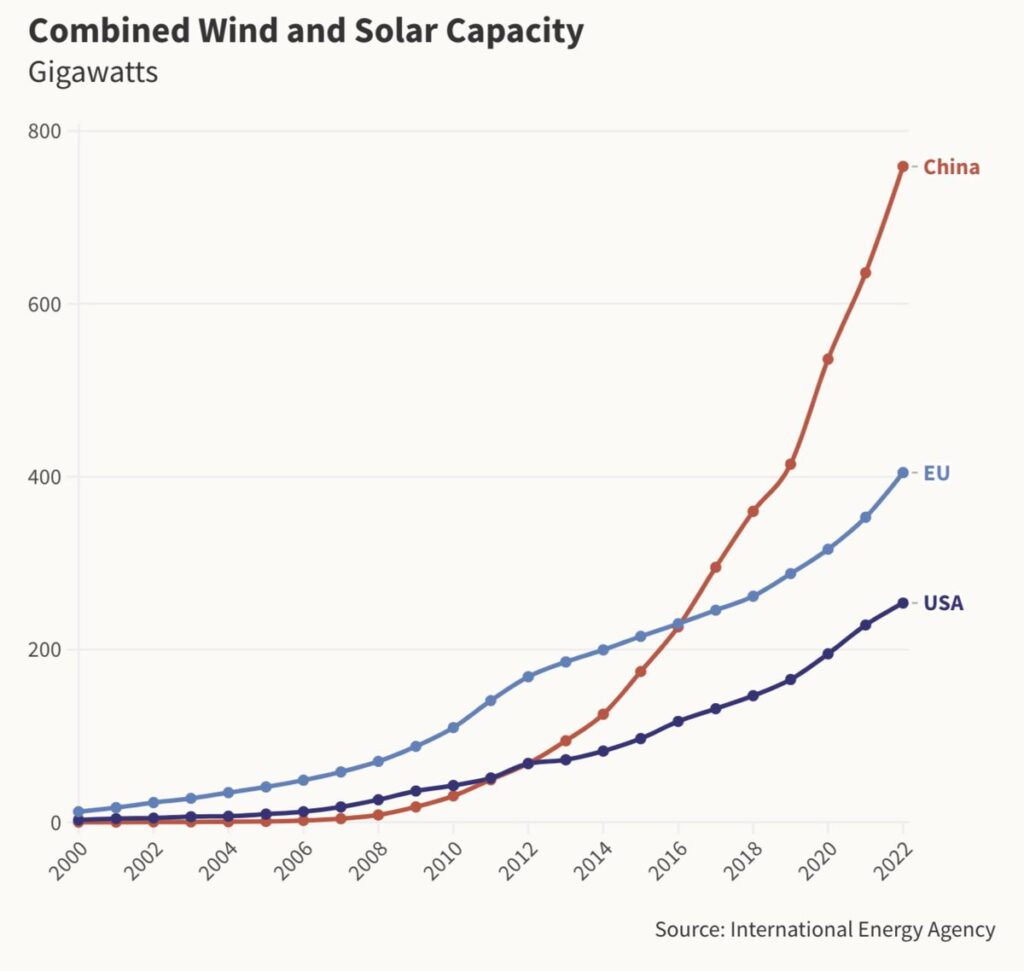
Dear UCP/Danielle Smith and your evangelical bosses at TBA, this graph is for you:
How China Became the World’s Leader on Renewable Energy
***
Robert Howarth@howarth_cornell March 13, 2024:
Best synthesis to date of methane emissions from natural gas in the US, published today in Nature, based on almost 1 million observations from airflights. And it is worse than most of us have been saying. Take a look:
I am revising my LNG lifecycle paper using this new estimate, 4.6% emissions (not including urban/surburban distribution systems) for the best studied major US shale gas fields. I had used a 2.6% value in my submitted paper on LNG. Shale gas and LNG are really bad for climate.
Oil Fields Release Far More Methane Than Thought, Study Finds, In parts of New Mexico, more than 9 percent of all natural gas produced goes into the atmosphere, where it acts as a powerful greenhouse gas by Hiroko Tabuchi, March 13, 2024, The New York Times
Oil and gas producers in major oil fields across the United States may be emitting three times as much planet-warming methane gas as official estimates, according to new research published Wednesday, the latest study to suggest that emissions from the fossil fuel sector may be grossly undercounted.
In some parts of New Mexico, more than 9 percent of the natural gas produced was escaping into the atmosphere, researchers said in the study, published in the journal, Nature.
Methane is the main component of natural gas, and when released unburned into the atmosphere it acts as an extremely powerful greenhouse gas. It can warm the planet more than 80 times as much as the same amount of carbon dioxide over a 20-year period.
The release of methane — often through leaks at well sites or gas processing plants, along pipelines or in other energy facilities — is bad news for global warming, which is already causing higher sea levels, fiercer storms, more intense droughts and a greater loss of biodiversity around the world.
For the study, researchers at Stanford University, Kairos Aerospace and other labs looked at about one million measurements gathered from aerial surveys over six oil- and gas-producing regions. Using those measurements, along with computer modeling, they found that oil and gas operations in those regions released an estimated 6.2 million tons of methane a year.
That’s close to 3 percent of the total gas produced by those regions a year, or the equivalent to the annual greenhouse gas emissions from the energy used by 20 million homes. In dollar terms, it’s about a billion dollars’ worth of gas.
One takeaway from this and previous studies was “just how concentrated emissions are in a very small fraction of sites,” said Evan D. Sherwin, who led the research at Stanford and now works at the Lawrence Berkeley National Laboratory. “That’s the silver lining. If we can figure out what’s happening at these small fraction of sites, we’re halfway toward solving the methane problem in oil and gas,” he said.
Scientists are increasingly turning their attention to getting better measurements of human-caused methane emissions, much of which comes from the oil and gas industry. MethaneSAT, a satellite launched this month by the Environmental Defense Fund, is designed to track methane at a global scale. It is one of several satellites that can detect and measure methane from space.
The new study found that methane emission rates varied widely across regions, from 0.75 percent in Pennsylvania to more than 9 percent in parts of New Mexico. One reason for New Mexico’s high rates: Operators there tend to drill for oil, not gas, and will simply release much of the gas that comes up into the atmosphere.![]() Beyond stupid
Beyond stupid![]()
Ritesh Gautam, a scientist at the E.D.F. who wasn’t involved with the study, said it provided important new data. He also said that more comprehensive measurements, including data from MethaneSAT, would soon complement these surveys. “To get a complete picture, these data need to be combined with direct measurement of total methane emissions,” he said.
In a separate analysis released Wednesday, the International Energy Agency said methane emissions from the energy sector remained near record highs in 2023. But it also struck a hopeful tone, saying new steps announced in recent months could soon put those emissions in decline.![]() Pffft. That’ll not happen as long as there are fossil fools feeding greed
Pffft. That’ll not happen as long as there are fossil fools feeding greed![]()
For now, global methane emissions remain “far too high” to meet international climate targets, the I.E.A. said. To limit global warming to 1.5° Celsius, or about 2.7 degrees Fahrenheit, above preindustrial times, a key goal of the Paris climate agreement, methane emissions from fossil fuels need to decline by 75 percent this decade, the energy agency said.
I.E.A.’s analysis found that the production and use of fossil fuels generated close to 132 million tons of methane emissions last year, a small rise from the year before. Emissions have remained at similar levels since 2019, when they reached a record. The United States, the world’s largest global producer of oil and gas, was also the largest emitter from oil and gas operations, followed by Russia.
Nearly 200 governments agreed at last year’s global climate talks in Dubai to “substantially” reduce methane emissions by 2030.![]() Pffft. Gov’ts lie and make promises they never intend to keep. I won’t believe any reductions happen ’til I see them.
Pffft. Gov’ts lie and make promises they never intend to keep. I won’t believe any reductions happen ’til I see them.![]() Major oil and gas companies have also signed onto the Global Methane Pledge to rein in their emissions.
Major oil and gas companies have also signed onto the Global Methane Pledge to rein in their emissions.![]() Also meaningless, companies lie and break their pledges and promises like chain smokers smoke.
Also meaningless, companies lie and break their pledges and promises like chain smokers smoke.![]() The Biden administration is also moving ahead with rules that require oil and gas producers to detect and fix leaks of methane.
The Biden administration is also moving ahead with rules that require oil and gas producers to detect and fix leaks of methane.![]() Since when do fossil fuel companies heed laws and regulations?
Since when do fossil fuel companies heed laws and regulations?![]()
All of the pledges made by countries and companies, implemented in full and on time, would cut methane emissions from fossil fuels by 50 percent by 2030, the I.E.A.’s new analysis found.
However, the I.E.A. noted, most pledges were not yet backed by concrete plans.![]() Of course not, they never are in the oil gas bitumen and coal industries.
Of course not, they never are in the oil gas bitumen and coal industries.![]()
“I am encouraged by the momentum we’ve seen in recent months, which our analysis shows could make an enormous and immediate difference in the world’s fight against climate change,” Fatih Birol, the I.E.A. executive director, said in a statement. “Now, we must focus on transforming commitments into action, while continuing to aim higher.”
US oil and gas system emissions from nearly one million aerial site measurements by Evan D. Sherwin, Jeffrey S. Rutherford, Zhan Zhang, Yuanlei Chen, Erin B. Wetherley, Petr V. Yakovlev, Elena S. F. Berman, Brian B. Jones, Daniel H. Cusworth, Andrew K. Thorpe, Alana K. Ayasse, Riley M. Duren and Adam R. Brandt, Nature volume 627, pages 328–334 (2024)
Abstract
As airborne methane surveys of oil and gas systems continue to discover large emissions that are missing from official estimates1,2,3,4, the true scope of methane emissions from energy production has yet to be quantified. We integrate approximately one million aerial site measurements into regional emissions inventories for six regions in the USA, comprising 52% of onshore oil and 29% of gas production over 15 aerial campaigns. We construct complete emissions distributions for each, employing empirically grounded simulations to estimate small emissions. Total estimated emissions range from 0.75% (95% confidence interval (CI) 0.65%, 0.84%) of covered natural gas production in a high-productivity, gas-rich region to 9.63% (95% CI 9.04%, 10.39%) in a rapidly expanding, oil-focused region. The six-region weighted average is 2.95% (95% CI 2.79%, 3.14%), or roughly three times the national government inventory estimate5. Only 0.05–1.66% of well sites contribute the majority (50–79%) of well site emissions in 11 out of 15 surveys.
Ancillary midstream facilities, including pipelines, contribute 18–57% of estimated regional emissions, similarly concentrated in a small number of point sources. Together, the emissions quantified here represent an annual loss of roughly US$1 billion in commercial gas value and a US$9.3 billion annual social cost6. Repeated, comprehensive, regional remote-sensing surveys offer a path to detect these low-frequency, high-consequence emissions for rapid mitigation, incorporation into official emissions inventories and a clear-eyed assessment of the most effective emission-finding technologies for a given region.

Refer also to:
2021: New study: Canada overlooking (intentionally?) industry’s methane leaks.
2012: MIT Frackademics, The ‘entire natural gas system’ is driving methane emissions — MIT study
***
![]() Humans need to dramatically reduce baby making and over consuming, but our species is ridiculously selfish and arrogant; it won’t happen unless nature intervenes.
Humans need to dramatically reduce baby making and over consuming, but our species is ridiculously selfish and arrogant; it won’t happen unless nature intervenes.![]()


